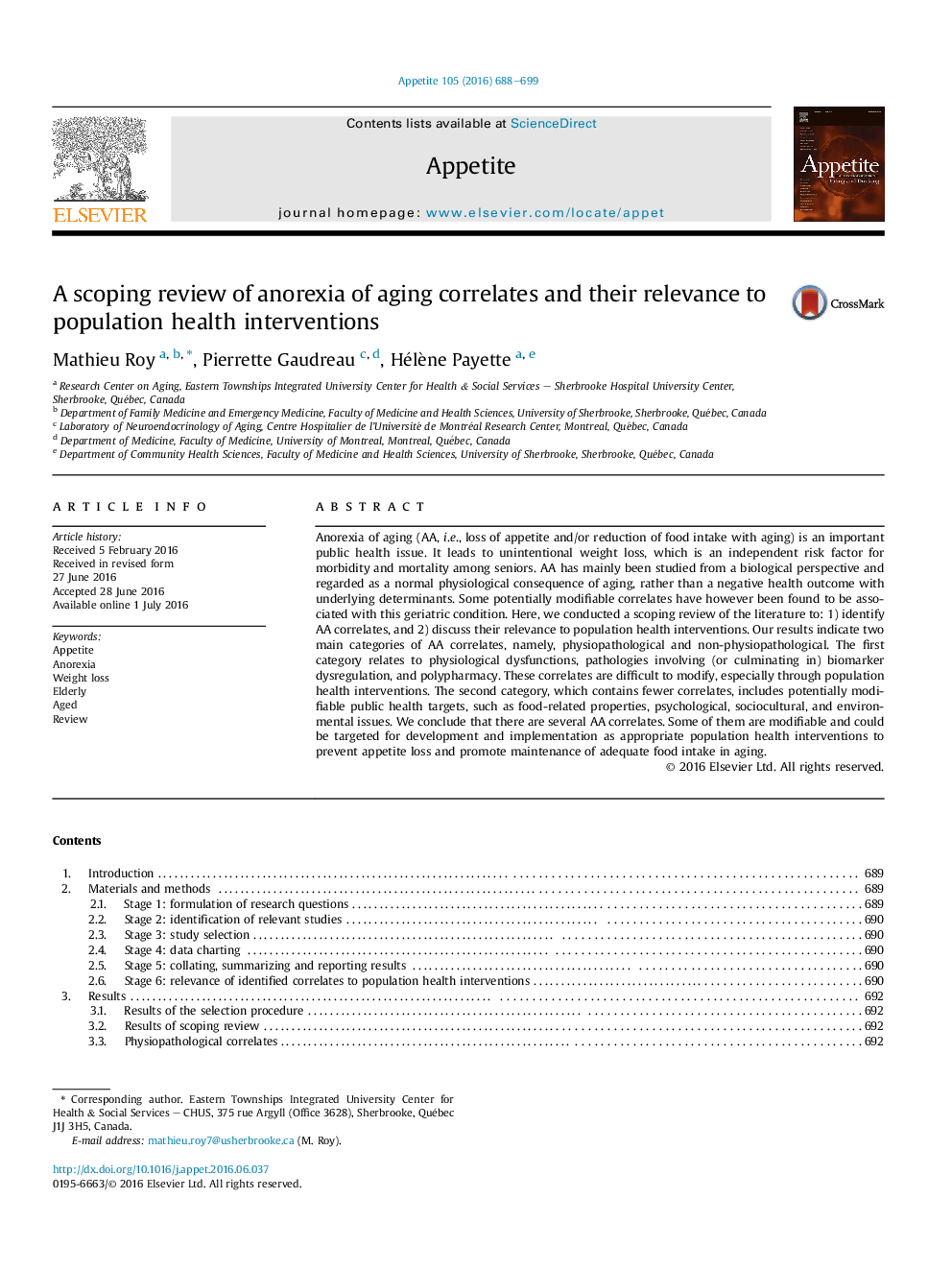| Article ID | Journal | Published Year | Pages | File Type |
|---|---|---|---|---|
| 7306703 | Appetite | 2016 | 12 Pages |
Abstract
Anorexia of aging (AA, i.e., loss of appetite and/or reduction of food intake with aging) is an important public health issue. It leads to unintentional weight loss, which is an independent risk factor for morbidity and mortality among seniors. AA has mainly been studied from a biological perspective and regarded as a normal physiological consequence of aging, rather than a negative health outcome with underlying determinants. Some potentially modifiable correlates have however been found to be associated with this geriatric condition. Here, we conducted a scoping review of the literature to: 1) identify AA correlates, and 2) discuss their relevance to population health interventions. Our results indicate two main categories of AA correlates, namely, physiopathological and non-physiopathological. The first category relates to physiological dysfunctions, pathologies involving (or culminating in) biomarker dysregulation, and polypharmacy. These correlates are difficult to modify, especially through population health interventions. The second category, which contains fewer correlates, includes potentially modifiable public health targets, such as food-related properties, psychological, sociocultural, and environmental issues. We conclude that there are several AA correlates. Some of them are modifiable and could be targeted for development and implementation as appropriate population health interventions to prevent appetite loss and promote maintenance of adequate food intake in aging.
Related Topics
Life Sciences
Agricultural and Biological Sciences
Food Science
Authors
Mathieu Roy, Pierrette Gaudreau, Hélène Payette,
